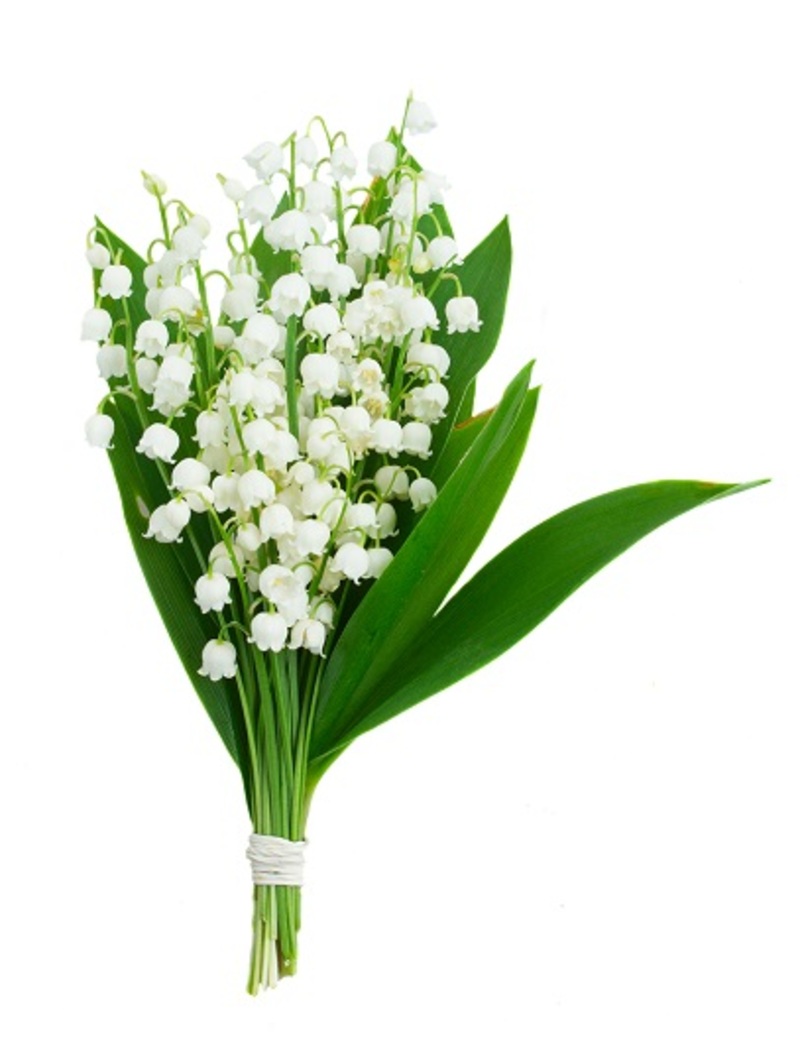Birth Month Blossoms and Their Secret Meanings
Posted on 01/07/2025
Birth Month Blossoms and Their Secret Meanings
Every month of the year is graced with its own unique birth flower, each carrying a tale of symbolism, history, and hidden meanings. From the classic elegance of the rose to the understated beauty of the violet, these birth month blossoms have been cherished for centuries across cultures. But do you know what your birth month flower signifies or the ancient secrets it holds? In this comprehensive guide, we delve into the mystical world of birth flowers and uncover the secret meanings behind each bloom.

Why Do Birth Month Blossoms Matter?
Just as birthstones represent the spirit of a month, birth month blossoms embody the personality and virtues associated with individuals born in that month. Gifting or displaying these flowers is more than a tradition--it's a meaningful gesture, imbued with layers of cultural and personal significance. Understanding the hidden language of flowers allows you to connect with your birth month in a special way and to choose the perfect bloom for a gift or celebration.
The Secret Meanings of Birth Month Flowers
- January: Carnation and Snowdrop
- February: Violet and Primrose
- March: Daffodil
- April: Daisy and Sweet Pea
- May: Lily of the Valley and Hawthorn
- June: Rose and Honeysuckle
- July: Larkspur and Water Lily
- August: Gladiolus and Poppy
- September: Aster and Morning Glory
- October: Marigold and Cosmos
- November: Chrysanthemum
- December: Narcissus and Holly
Let's take a closer look at each of these birth month blossoms and explore the secret meanings behind them.
January: Carnation & Snowdrop
Carnation is often seen as a symbol of love and fascination. These ruffled blossoms come in a spectrum of colors, each with its unique meaning. Pink carnations indicate affection, while red carnations stand for deep love. In the language of flowers, carnations represent unwavering admiration and are perfect for celebrating new beginnings in the chill of January.
The snowdrop, with its delicate white petals, blooms even in the snow, symbolizing hope and rebirth. For those born in January, it represents resilience and the promise of brighter days ahead.
February: Violet & Primrose
Violet is the epitome of modesty and virtue. Its heart-shaped leaves and vibrant color make it stand out in the late winter months. Symbolically, violets convey faithfulness, loyalty, and wisdom.
The primrose, with its early blooms, signals the start of spring. It represents young love and renewal, making it a fitting blossom for the month of love.
March: Daffodil
There's no mistaking the cheerful yellow daffodil, the official flower of March. As one of the first blooms of spring, daffodils signify rebirth, new beginnings, and hope. In Victorian flower language, presenting someone with a bunch of daffodils meant happiness and prosperity.
April: Daisy & Sweet Pea
The daisy stands for innocence and purity. Its white petals radiate simplicity and are beloved for their joyful appearance.
Sweet pea, with its intoxicating fragrance and delicate structure, represents blissful pleasure and goodbyes. It's often given to express gratitude for a lovely time or a sincere thank you.
May: Lily of the Valley & Hawthorn
Elegant and aromatic, the lily of the valley is a timeless symbol of humility, sweetness, and the return of happiness. These bell-shaped blooms were believed to bring luck in love and marriage.
The hawthorn flower, often seen in delicate clusters, signifies hope and supreme happiness. Its antique association with protection and prosperity made it popular in European folklore.
June: Rose & Honeysuckle
Perhaps the most famous of all birth month blossoms, the rose is the ultimate symbol of love and beauty. Each color tells a different story: red for romantic love, white for purity, yellow for friendship, and pink for admiration.
Honeysuckle, with its sweet nectar and enticing scent, means devotion and bonds of love. It's no wonder June--the start of summer--hosts this passionate flower.
July: Larkspur & Water Lily
Larkspur blooms in shades of pink, purple, and white, and is known to represent positivity and an open heart. In floriography, it can also suggest lightness and levity.
The water lily--majestic as it floats atop serene ponds--symbolizes purity of heart and enlightenment. Its appearance in midsummer offers a reminder of tranquility and rebirth.
August: Gladiolus & Poppy
Gladiolus, with its dramatic spikes of color, stands for strength, integrity, and infatuation. Known as "sword lilies," these flowers have roots in the Roman arena, where they were associated with victory and determination.
The poppy is evocative of remembrance, imagination, and peace. In many cultures, poppies are worn or displayed to honor those who have passed, making them a poignant August flower.
September: Aster & Morning Glory
As the crisp air of fall approaches, aster blooms shine in purple, pink, and white hues. These star-shaped blossoms convey wisdom, elegance, and patience.
Morning glory, which opens its petals with the sunrise, is a symbol of affection and unrequited love. Its swift bloom and brief life encapsulate the transience of beauty.
October: Marigold & Cosmos
Marigolds are well known for their vibrant orange and gold petals, representing warmth, passion, and creativity. In some cultures, marigolds are used in rituals to honor the dead and invite good fortune.
The cosmos flower, with its perfect symmetry, signifies balance, peace, and order. It's a reminder of the simple joys and harmony of life as autumn settles in.
November: Chrysanthemum
The chrysanthemum is a revered flower in Asia, symbolizing loyalty, friendship, and joy. In the language of flowers, giving a chrysanthemum is a gesture of well-wishing and enduring affection.
December: Narcissus & Holly
In December, the narcissus (often the paperwhite variety) signals good fortune and hope for the year ahead. It's also tied to the ancient myth of self-reflection and understanding.
Holly, with its bright red berries and prickly green leaves, has long been a symbol of protection and defense. Its enduring nature and festive appearance embody the spirit of winter celebrations.
How to Use Birth Month Blossoms in Everyday Life
Now that you know the secret meanings of birth month flowers, how can you incorporate them into your life?
- Personalized Gifts: Create bespoke bouquets or jewelry using someone's birth flower.
- Home Decor: Decorate your home with fresh or faux arrangements featuring your family's birth flowers.
- Garden Planning: Design a garden that blooms with the flowers of your loved ones' birth months.
- Celebrations: Use these blossoms in birthday parties, weddings, or baby showers for a meaningful touch.
The Enduring Appeal of Birth Month Blossoms
The language of flowers, also known as floriography, has captivated humans for centuries. Each birth month blossom tells a unique story--about hope and resilience, love and remembrance, joy and renewal. Whether you're seeking a thoughtful gift, a personal talisman, or simply wish to learn more about the origin of flower symbolism, understanding birth month blossoms and their secret meanings adds a new layer of connection to the natural world.
As you reflect on your own birth month flower, consider what qualities it represents. Are you as steadfast as the snowdrop, as creative as the marigold, or as pure-hearted as the water lily? Perhaps you'll find new inspiration and meaning in the blossom that shares your birth month. Celebrate your individuality and heritage with the timeless beauty of birth month flowers.

Frequently Asked Questions About Birth Month Blossoms
- Are there different birth flowers for each month in different cultures?
Yes! While the list above reflects common Western traditions, many cultures have their own unique birth flowers and meanings. For example, Japan greatly reveres the cherry blossom, while in other countries, alternative flowers may be celebrated for a given month. - Can a person have more than one birth flower?
Absolutely. Some months have both a primary and secondary birth flower, offering a range of meanings for individuals born during those times. - What is the best way to give a birth flower as a gift?
Personalize the gesture! Include a note explaining the flower's secret meaning, present a potted plant, or order customized jewelry featuring the birth blossom. This adds depth and thoughtfulness to your gift.
Conclusion: Discover the Power of Your Birth Flower
Your birth month blossom isn't just a pretty flower--it's a symbol of your personality, your journey, and your connection to centuries of tradition. By learning and embracing the secret meanings behind your birth flower, you can cultivate a deeper appreciation for nature and self. Whether you plant it in your garden, give it as a thoughtful gift, or simply admire its beauty, let your birth month flower remind you of your unique story all year round.
Explore the wonder of birth month blossoms and their secret meanings--celebrate every month with the language of flowers!
Latest Posts
Understanding Yourself Through the Lens of Your Birth Flower
Extend Your Flower's Lifespan with These 3 Simple Tricks
Birth Month Blossoms and Their Secret Meanings





